当前位置:网站首页>A high density 256 channel electrode cap for dry EEG
A high density 256 channel electrode cap for dry EEG
2022-07-05 10:08:00 【Yueying Technology】
High density EEG (HD-EEG) At present, it is limited to the laboratory environment , Because the most advanced electrode cap requires skilled workers and a lot of preparation . We have proposed and evaluated a kind of 256 Channel EEG cap . This paper introduces polyurethane as raw material , Coating Ag/AgCl Design of dry electrode . There are 30 Volunteers participated in the study , We will introduce new dry hd- Electroencephalogram cap and traditional gel electroencephalogram cap conduct electrode skin impedance 、 Resting EEG and visual evoked potentials (VEP) Comparison . We use it 8 Electrodes simulate hat application on real human body and artificial skin for wearing test .256 One of the dry electrodes 252 The average impedance is lower than 900 kΩ, You can use the most advanced EEG amplifier to record . For dry EEG cap , We got 84% Channel reliability and reduction 69% Time to prepare . Excluding average 16%( Dryness ) and 3%( Gel ) After the bad channel , Resting state EEG、alpha Activity and pattern reversal VEP Less than... Can be recorded in all compared signal characteristic indexes 5% The significant difference . Volunteers report , stay EEG Record before and after , The wearing comfort of dry hat is 3.6±1.5 and 4.0±1.8, The wearing comfort of gel hat is 2.5±1.0 and 3.0±1.1(1-10 branch ). Experiments show that , The use of dry electrode can reach 3200 Time .256 The tunnel HD-EEG The dry electrode cap overcomes HD-EEG Major limitations in preparation complexity , Allow untrained personnel to quickly apply , So that HD-EEG New use cases for .
1. introduction
EEG is widely used in clinical neurology and neuroscience . In recent years , Highly compact 、 Light weight 、 The development of battery powered commercial biological signal amplifier electronic technology has promoted the progress of EEG in many new application fields . Now , EEG is increasingly used to study individual brain functions outside the traditional laboratory settings in a highly mobile ecological environment 、 brain - Body interaction and emotion 、 Psychological and social group interaction .
Gel based silver / Silver chloride (Ag/AgCl) Electrodes are commonly used in electrophysiological measurements . The electrode skin contact of the gel based electrode is mediated by an electrolyte gel or paste manually applied to each electrode location . Skin preparation 、 Gel application and subsequent cleaning require skilled personnel and a lot of laboratory time . Complexity and time requirements lead to errors in the whole preparation process , Finally, the measurement error is caused by electrode damage or dislocation or gel bridge between adjacent channels . The influence of these shortcomings and the prevalence of errors increase significantly with the increase of the number and density of electrodes , Especially in 256 High density EEG with electrodes (HD-EEG) In the device . Besides , The influence of preparation process and gel drying hinders its application in mobile and group applications .
Dry electrodes rely on direct skin contact , Eliminate the requirements of gel application . Besides , Compared with gel electrode , The dry electrode can be applied by the user . Different concepts of dry electrodes are proposed for EEG , Including flat adhesive patches , Needle shape , Spider shaped , And brush electrode . Again , The material composition is significantly different from that of solid metals to intrinsically conductive polymer composites and coated polymers . so far , Due to physical or cost constraints ( For example, electrode size ; Required electrode retraction mechanism ; Electronics of active electrodes ). Compared with traditional clinical EEG ,HD-EEG More electrodes are used , To provide high spatial sampling of head potential distribution . Information gain has been widely discussed in the literature , It has been proved to support the accuracy of source location , It is helpful to analyze temporal EEG dynamics and phase synchronization . In addition to research ,HD-EEG The application and benefit in clinical application have also been valued , It improves the recognition of epileptic rapid oscillation and the location of epileptic seizure area , Biomarkers that support the monitoring of disease progression , Such as evoked potentials . Besides , In particular, the dry electrode setting benefits from the improvement of spatial resolution , Dry electrodes that allow spatial oversampling for artifact detection and correction and compensation for the current low channel reliability .
We put forward a new 256 Channel capacitance , Semi flexible 、 Multi needle and dry electrode HD-EEG. Three different electrode types are integrated together , In hairy ( Long needle ), Less hair ( Medium needle ) And glabrous ( Wave needle ) Easy location , repeatable , Comfortable electrode skin contact . In one, for 30 In the study of healthy volunteers , We compared the new dry type HD-EEG Cap with standard gel type HD-EEG Performance and applicability of cap . We use the established benchmark paradigm , It allows direct comparison with the results of previous low-density dry EEG studies . Besides , We propose wear tests to investigate the durability of dry electrodes .
2. Materials and methods
2.1 Electrodes and caps
This new electrode is based on our previous dry electrode , Use smaller overall diameter , Thus reducing the number of stitches , Compared with our previous EEG cap , Allow higher channel counts . These novel multi needle electrodes include a total of 19 A needle . Even though Fiedler wait forsomeone ,2018 In, electrodes with larger base plate diameter were used in the double electrode measuring device , But the shape of the pin 、 The arrangement and distance of pins are different from those used in the current study HD-EEG The electrodes are the same . therefore , The relevant functional components of the electrode are the same , You can directly compare . Three electrode types are obtained : Two needle electrodes , The needle length is 6 Mm and 3 mm , Apply to hair dense and non dense head areas respectively ( Front position ). The third electrode type ( Wave needle ) Include a flat surface , There's... On the top 19 The diameter is 1.5 mm Hemispheres of , Specially deal with the non hair position of the forehead ( See the picture 1c,e). The purpose of these three basic designs is to provide a good compromise between the ability of electrodes to easily pass through hair , Establish reliable and repeatable electrodes - Skin contact , And provide users with enough wearing comfort .
Thermosetting polyurethane Shore Hardness is 98, As a semi-rigid electrode substrate material , It can adapt to local head bending , Avoid excessive 、 Painful local pressure points .Ag/AgCl The coating has conductivity and reliable electrochemical characteristics . The coating is applied to non-conductive PU Ensure the high conductivity coating on the substrate and the adhesion between the coating and the substrate . The coaxial cable is directly welded to the back of the electrode , Support the use of active shielding , To reduce the sensitivity to environmental noise .256 Two dry electrodes are installed in a double-layer fabric cap . The cable is completely covered between two layers of fabric caps , Avoid mechanical stress on the fabric cap during use and disassembly . Pictured 1e Shown , All electrodes are mechanically fixed at the middle distance of the fabric cap . Isometric layout is selected because of its advantages in mechanical properties , So that the hat body can adapt to different head shapes , And for data analysis , Including spatial filtering 、 Calculation of connectivity metrics , or HD-EEG Source reconstruction commonly used in data analysis . The reference electrode and the patient grounding electrode are integrated into the flat button droplets of the right and left mastoid respectively , For use with self-adhesive replaceable patch electrodes . The image of the whole cover is shown in the figure 1a Shown , From the outside ( Left ) And internal ( Right ).
In order to obtain reference data , We used commercial gel caps , Including sintering Ag/AgCl electrode , Coaxial cables are arranged in the same equidistant electrode layout . ad locum , The reference electrode is placed near the vertex Z12Z Location ( See the picture 1e), All in all 255 A reference EEG channel . Use medical tape to Ag/AgCl The bottom drooping electrode of the integrated patient is placed on the left mastoid .
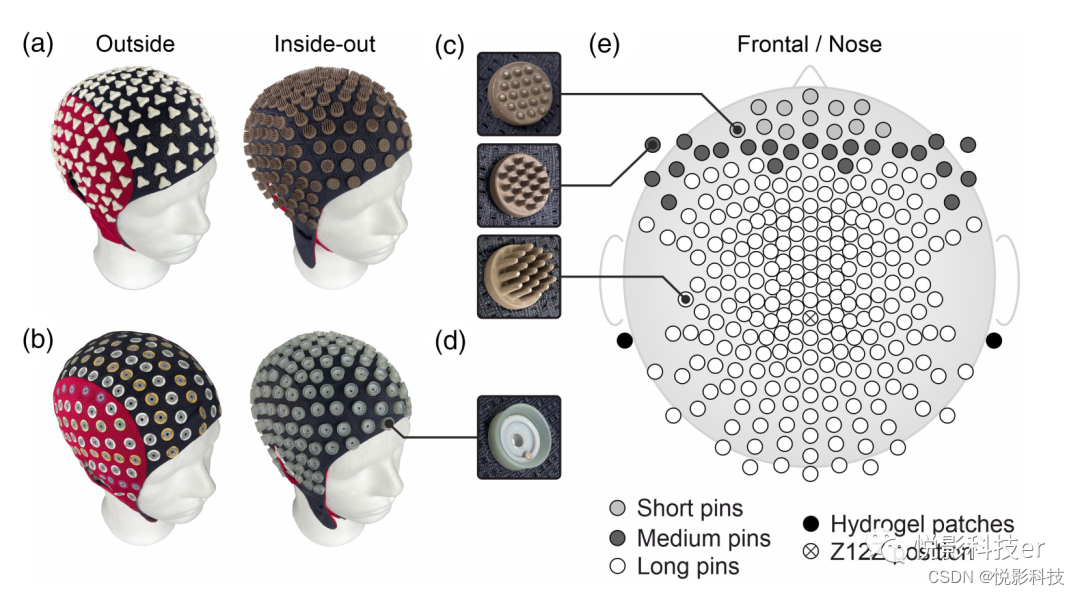
chart 1 Compare the type of electrode cap :(a) Dry electrode cap ,(b) Commercial gel caps ( Left ) And flipped ( Right ); Dry electrode type wave , medium , Long needle , and (d) Gel based sintering Ag/AgCl electrode ;(e) Equidistant electrode layout ,256 passageway + Benchmark and patient location ; Including color coded positions of different electrode types
2.2 In vivo measurement
We used the validation paradigm we established before to test the new dry electrode and commercial gel type HD-EEG Hats are compared , To evaluate and compare the following :
Ø Measure the preparation time between the first time the volunteer wears a hat on the head and the beginning of EEG recording ;
Ø(a) Open your eyes and (b) Eyes closed, resting EEG, Blink and (d) Pattern reversal visual evoked potential (VEP) Signal quality ;
Ø Collect electrode skin impedance and channel offset potential at the beginning and end of EEG , Use the integrated function of EEG amplifier to measure ;
Ø Use Scott and Huskisson Pain scale and stanford The sleepiness scale assessed the subjective wearing comfort and attention level of volunteers before and after obtaining EEG .
In order to minimize the operator's deviation from the results ,4 Three operators carry out the measurement independently . Each operator received supervision training from two volunteers . These training courses and volunteers were excluded from data analysis .
30 Three volunteers participated in the study . Yes 30 Of the volunteers 20 It's going on VEP measurement . All volunteers are male , Average age 31±10 year , Average head circumference 58±1 centimeter , Average hair length 4±3 centimeter . therefore , All volunteers belong to the same hat size . Volunteers reported healthy nerves 、 Psychological and skin States , No history of drug abuse , At least one night before participating in the study 7 Hours of sleep . Volunteers were asked to use ph Shampoo with neutral shampoo . Minimum interval between drying record and gel record 1 Hours . In each case , Apply dry electrode cap , And all relevant data are collected before the gel electrode cap . This specific test sequence and the recovery period between tests are designed to minimize skin irritation or electrodes and / Or the cross conditional effect caused by the hydration of electrolyte .
Before using the electrode cover , Wash the left side with a cotton pad soaked in ethanol ( Two electrode covers ) And right ( Only dry electrode cover ) Mastoid . No further skin cleaning at other electrode positions . When measuring with a gel cap , The patient's drooping electrode is connected to the left mastoid and filled with electrolyte gel . And then , Gel the reference electrode and other EEG electrodes . During the preparation of the gel cap , The impedance value is continuously monitored , And for 90% The channel of defines the maximum threshold 50 kΩ. rest 10% The channel of should show the lowest possible impedance level , And usually avoid the gel bridge between adjacent electrodes , Because eventually too much gel is applied or diffused . For dry electrode cap measurement , Self adhesive pre setting glue gel electrode is applied to patient ground and reference flat button droplets , And attached to the left and right mastoids . Only the base electrode and reference electrode of hydrogel patients are defined 50 kΩ Impedance threshold of . No impedance threshold is defined for the other electrodes of the dry electrode cap . Through subjective evaluation of signal quality and contact reliability , Guide operators to optimize the coordination of dry electrode cap and electrode contact at the overall and personal level .
In cascade HD-EEG In the device , Connect these brain caps to 4 Commercial mobile 64 Channel reference DC-EEG amplifier . The amplifier provides input impedance >1 GΩ, Common mode rejection ratio >100 dB, And support active shielding . The sampling rate of the whole EEG record is 1024 Samples / second . Use run eevoke Software independent computer , The indications for blinking and VEP Indications for pattern reversal stimulation .
2.3 Data analysis
Use eego Control software records EEG and impedance data . All data is exported as raw data , And use custom MATLAB Script for further analysis . The EEG records of each volunteer and each hat were analyzed separately . Analyze the impedance at two time points before the first and last EEG recording . Based on the manufacturer's default threshold , Apply a to the result 1 MΩ Upper threshold of , It also limits the influence of measurement outliers . We used a DC EEG amplifier . therefore , The channel offset is calculated as 30 The average value of the second long raw data sequence , Skip the front of the record 10 second , To allow the electrode to stabilize .
The record is bandpass filtered , Use 30 Butterworth filter , The cut-off frequency is 1 and 40 Hz. And then , By independent 、 Trained operators visually recognize bad passages , And exclude it from further signal feature analysis . Bad channels are defined as (1) Saturated isoelectric channel ,(b) Contains more than 20% Analysis of artificial non physiological data of EEG sequence . Other channels are subject to the common average reference .
The total number of records we studied is 120(30 Volunteers 4 A recording ). For all EEG recordings , Each channel is divided into good channel and bad channel according to the above definition . According to the type (1) Define the relative channel reliability of a particular channel CR, g The cumulative number of records for each electrode type (m = 120) in , This particular channel is marked as a better channel

Besides , We calculated the display impedance Z > ZT(ZT Range from 10 kΩ To 1 MΩ, step 10 kΩ) And display channel reliability CR < CRT( step 1%,CRT Range from 100 To 40%) Spearman rank correlation coefficient between channel groups . Yes 30 s Long resting EEG recording sequences were analyzed in frequency domain . utilize Welch The estimation method calculates the power spectral density . Calculate alpha Band (8-13 Hz) The average power of . Use spherical spline interpolation to interpolate the missing data of the bad channel .
VEP The results were obtained by averaging each volunteer 150 Second stimulation test to evaluate , The interval before stimulation is 100 ms, The interval after stimulation is 400 ms. Before stimulation 100 Starting in milliseconds 50 Within a millisecond interval , Subtract the offset from each channel as the average . In order to quantitatively compare the performance of gel cap and dry cap VEP trace , According to the formula (2) and (3) The root mean square deviation of each channel is calculated (RMSD) And Spearman rank correlation coefficient ρ. among ,U Each corresponds to a total of 513 Data samples ( namely 500 ms data ) Based on gel (Ug) Or dry (Ud) Electrode recording channel j Data samples of i.
According to the formula (4) To calculate the VEP Time domain global field power of all channels (GFPt), U yes x Of the channels m or n Voltage samples of channels .
According to the formula (5) and (6) Calculate the number of each volunteer's two hat types GFPt Between RMSDGFPt and ρGFPt.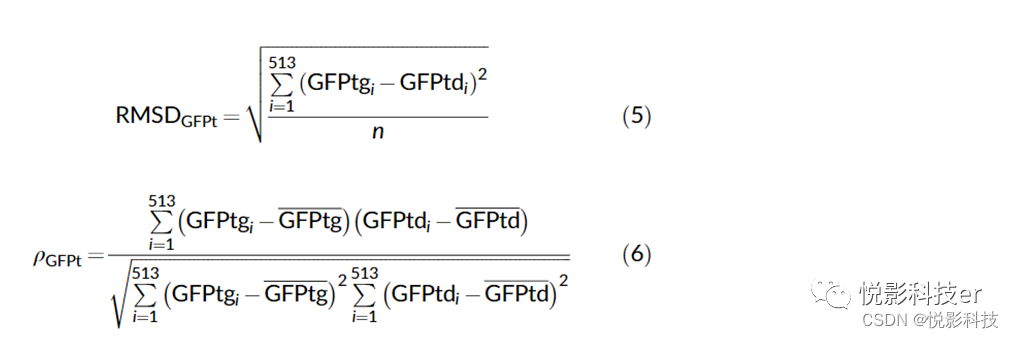
We derive two signal-to-noise ratios (SNR) It is estimated that :SNRGFPt yes N75 or P100 At the peak GFPt The ratio of the , And the noise power is defined as the baseline interval GFPt Average value = [100,50]ms. SNRmax yes N75 or P100 The ratio of the peak amplitude to the baseline interval standard deviation of the calculated maximum absolute amplitude of each channel .
Subjective attention level of all volunteers 、 Comfort Evaluation 、VEP Peak latency 、VEP Peak power 、 Signal to noise ratio and psd Have been tested , To determine the statistically significant difference between gel recording and dry recording . Besides , It is tested at single channel level and interpolated two-dimensional terrain level α Band power and VEP Spatial distribution of peak amplitude . For all the above parameters , The assumption of normal distribution is corresponding Kolmogorov-Smirnov The test is in alpha Level is 0.05 Refuse . therefore , use Wilcoxon-Mann-Whitney U The test tests the statistical significance of parameter differences ,alpha Level is 0.05. stay psd Under the circumstances , With 1hz Step size vs. frequency band 1 - 40hz Compare , We use pairwise comparison after the event Bonferroni correction , Get corrected alpha Level is 0.0013.
2.4 Wear test
Electroless plating PU The result of the substrate is Ag/AgCl The layer thickness is 6 ~ 14 μm Change between . Reusing the cover will remove a small amount of coating due to friction when the cover is placed on the head . therefore , The problem is coming. , When the coating is worn off , Before exposing the non-conductive substrate , How many applications are possible . We measure 11 Test electrode 19 Resistance between the tip of each needle and the back of the base plate (87 III True RMS A multimeter ) To test the durability of the coating . The test electrode is a spare sample for the production cap (1 A wave needle and 10 A long needle electrode ). These samples are produced with electrode caps , Therefore, it is the same as the electrode cap .
The standard gel EEG cap is sintered Ag/AgCl electrode , The indicated service life is about 800 Time . therefore , We tested our electrodes at least 800 Times of application testing ( namely , On the forearm respectively 800 Second rubbing and rotating on artificial skin 800 Time ). Considering using 800 Next time , The resistance of our first test sample did not change , We extend the wear test to 1600 Time 、2800 Secondary sum 3200 Time . In order to evaluate the wear effect , Used extra SEM Surface image .11 One of the electrodes is imaged directly after production , Not used for wearing test ( surface 1 Conditions in 0). surface 1 Provides a summary of the test conditions , Including electrode needle type 、 Skin type 、 Test the number of applications and the analysis carried out .
3. result
3.1 Impedance and channel reliability
chart 2 Sum graph 3 The large average values of electrode skin impedance before the first EEG recording are displayed respectively , For dry and gel recording . At the beginning of the experiment , The average electrode skin impedance of all dry electrode channels is 532±199 kΩ, The end of the experiment is 568±202 kΩ. The mean and standard deviation are in the frontal area 、 The anterior and temporal regions showed lower values , And in the center of the head 、 The impedance of parietal lobe and neck region is the highest . contrary , The head area where the impedance level generally increases or decreases is invisible to the gel electrode . The average values at the beginning and end of gel EEG recording were 24±18 kΩ and 19±14 kΩ.
The mean and standard deviation of the offset potentials at the beginning and end of EEG recorded by gel method are 1.7±30.5 mV and 0.6±31.2 mV. The average offset of the dry electrode at the beginning of the recording is 7.1±46.6 mV, At the end of the record is 8.4±53.3 mV. According to the bad channel evaluation results , To calculate the 30 Relative channel reliability of volunteers and all EEG records . The topographic distribution of the reliability of each channel is shown in the figure 4 Shown . The average channel reliability is 84±11%.
surface 1 Mechanical wear test samples , Skin type , And analyze ; Sort by number of applications 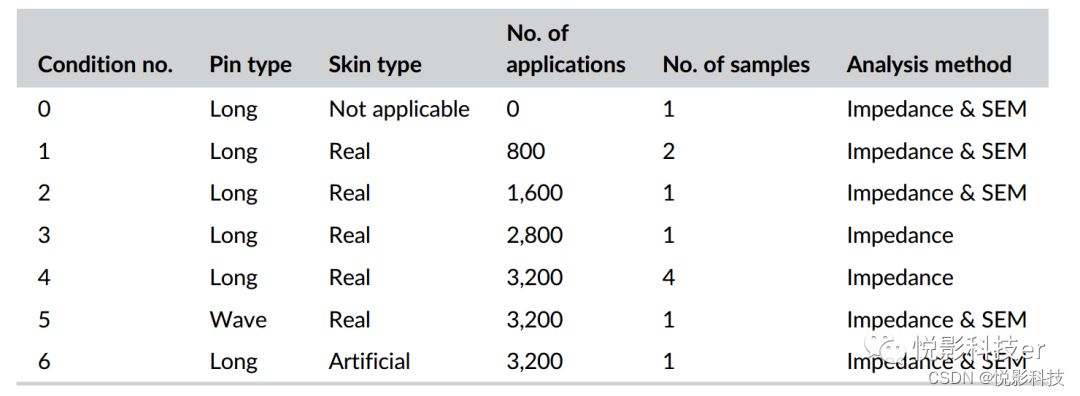
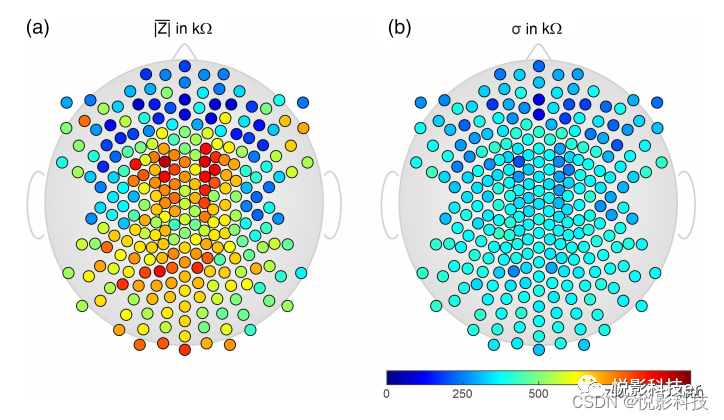
chart 2 At the beginning of EEG recording of all volunteers , Topographic distribution of electrode skin impedance of dry electrode cap :
(a) Average ,(b) sdd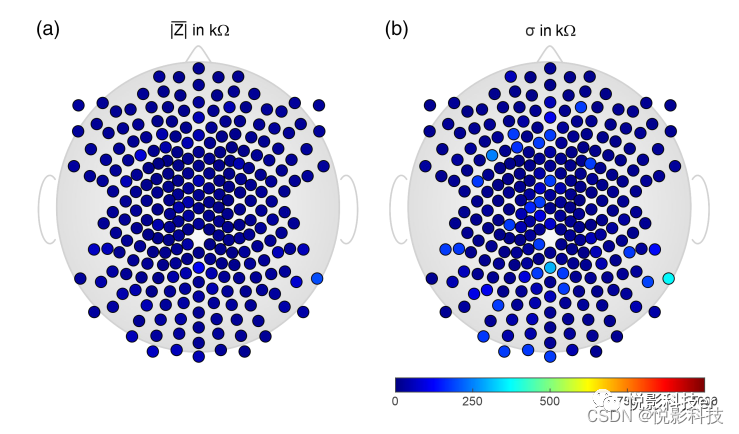
chart 3 At the beginning of EEG recording , Topographic distribution of electrode skin impedance of gel electrode cap :(a) Average ,(b) All volunteers SD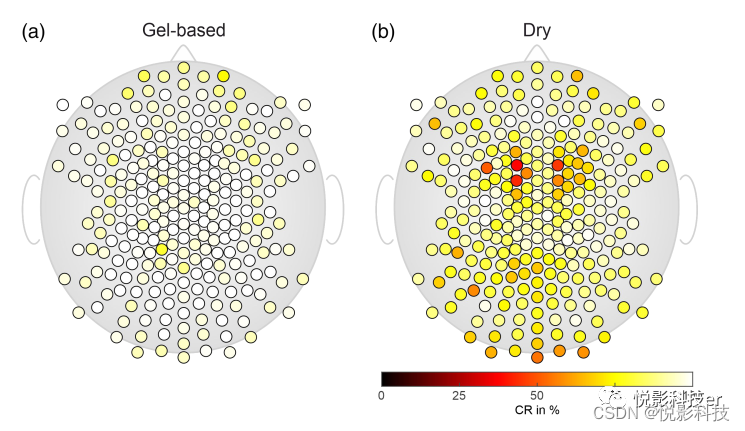
chart 4 Adverse channel assessment based on all volunteers and all EEG test sequences , To calculate the
(a) Gel electrode cap and (b) Topographic distribution of the relative channel reliability of the dry electrode cap
In the area where the electrode skin impedance increases , Dry electrode cap shows reduced electrode reliability , Especially in the center , Parietal lobe and neck region . In the gel cap , Areas where channel reliability declines are also visible , Especially in the prefrontal and parietal regions . chart 5 Shows the electrode skin impedance ZT (10 kΩ-1 MΩ, step 10 kΩ) Above channel group and channel reliability threshold CRT(100-40%, step 1%) The correlation results between the following channel groups . For impedance threshold ZT = 900 kΩ, Channel reliability threshold CRT = 55%, The correlation is 1. If the impedance is lower than 900 kΩ, The corresponding channel reliability is 55% above .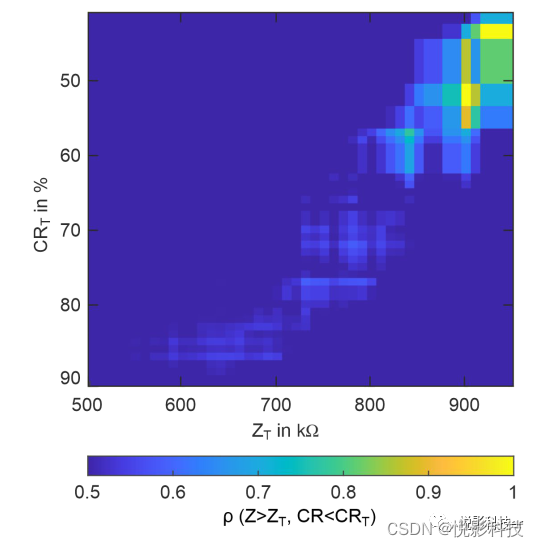
chart 5 At the impedance threshold ZT Above and channel reliability threshold CRT Channel reliability between the following groups of channels CR And dry electrode cap electrode skin impedance Z Color coding Correlation .
3.2 EEG characteristics
chart 6 It shows that you open your eyes ( chart 6a) And close your eyes ( chart 6b) Record the static state psd Of Welch It is estimated that ( Mean and standard deviation , Calculate in all channels and all volunteers ). Besides , chart 6c It shows the absolute value of the difference between the corresponding records of the gel electrode and the dry electrode . With your eyes closed, you can see the power increase in the alpha band . In drying and gel recording , Great average PSD Of alpha The band peak power is 10.2 μ v2 /Hz and 9.1 μ v2 /Hz (10.1 Hz). In the eye opening recording , Compared with closed eye recording , Two electrode types at frequencies below 2hz The visible power increases . The maximum absolute difference at rest with eyes closed is 1.1 Hz, by 3 μ v2 /Hz. For above 2.1 Hz The frequency of , Great average PSD The difference remains 1.4 μ v2 /Hz following . Experimental results show that ,3 Hz There was significant difference in resting EEG with eyes closed (p = .0010).2hz (p = .0020) and 4hz (p = .0015) Of p Lower values , But not lower than the significance threshold . There is no significant difference in other frequencies . Besides , Within the frequency range of the whole survey , There was no significant difference in EEG at rest with eyes open .
chart 7 All volunteers are shown VEP The overall average result of , Butterfly diagram including a single channel ( chart 7a,b) And two electrode types GFPt Overlay ( chart 7c). For dry electrodes and gel electrodes ,N75 Peak GFPt Values, respectively 19.3 μV2 /Hz @ 83.0 ms and 20.0 μV2 /Hz @ 78.8 ms.P100 Peak GFPt Values, respectively 42.0 μV2 /Hz @ 127.4 ms and 43.4 μV2 /Hz @ 124.0 ms Drying and gel recording , , respectively, . All channels and volunteers RMSD The large average values of and correlation coefficient are 0.73±0.16 μV and 0.65±0.08. The channel correlation of high signal amplitude in central and parietal regions is high , The channel correlation of low signal amplitude is low . Global magnetic field power RMSDGFPt and ρGFPt The big average values of are 5.0±1.7 μV and 0.85±0.13. Two electrode types GFPt The difference between corresponding peaks is in peak power (p≥0.35) And peak delay (p≥0.16) There is no statistical significance .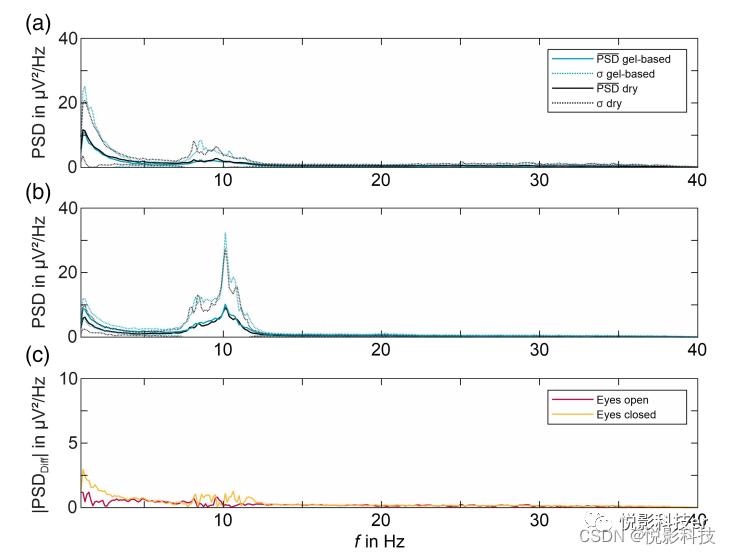
chart 6 The two electrodes are (a) Open your eyes and (b) High average power spectral density of resting state activity recorded with eyes closed (PSD). The solid line indicates the average value , The dotted line shows SD; The absolute value of the difference between the gel electrode and the dry electrode when the eyes are open or closed .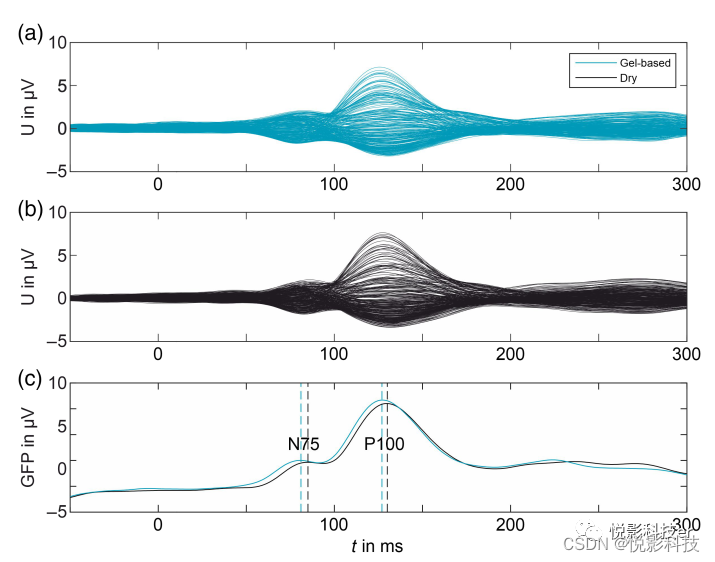
chart 7 Large average visual evoked potential (VEP) result : Butterfly diagram shows (a) All channels recorded by gel ,(b) Dry electrode recording , And with prominent N75 and P100 Peak latency GFPt Trace overlay .
Statistical tests show ,N75 peak (p = .3871) and P100 peak (p = .4733) Gel type dry cap SNRGFPt There is no significant difference . Besides ,N75 peak (p = .9534) and P100 peak (p = .1526) Gel based dry cap SNRmax There was no significant difference between . chart 8 Violin diagram showing the estimated signal-to-noise ratio of two electrode types . The respective peak delays are VEP Comparison of Peak topography , Pictured 10a (N75 peak ) Sum graph 10c (P100 peak ) Shown . The absolute difference between the two landforms is shown in the figure 10b and 9d Shown . stay N75 Peak case , Topographical 2.8% And waterways 4.3%( namely 11 Channel ) The difference is significant . about P100 peak , Only 2.1% Area and 2.3% The passage of ( namely 6 Channels ) There are significant differences . The average preparation time of the gel electrode cap is 62±9 min, The average preparation time of the dry electrode cap is 19±4 min, The total recording time after preparation is 29±7 min and 28±7 min. Before EEG recording , The level of attention reported by volunteers ( Stanford Sleepiness Scale ), The gel electrode cap is 2.3±1.0, The dry electrode cap is 2.6±0.9. At the end of EEG recording , The attention levels reported by volunteers were 3.3±1.2 and 3.5±1.8. In both cases , The difference between gel cap and dry cap is not significant .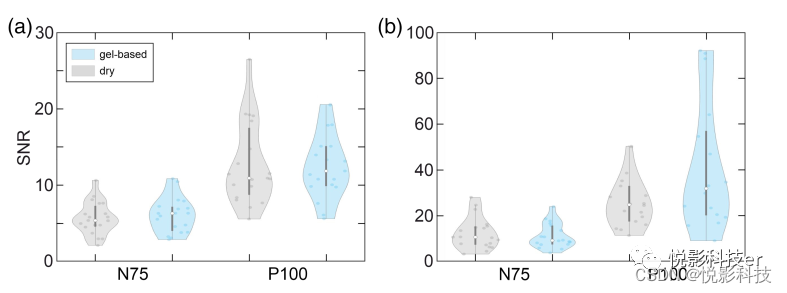
chart 8 a) SNRGFPt and b) SNRmax Of SNR Violin diagram of distribution , Calculate the visual evoked potentials of all subjects (VEP). These points represent values . data 2.7 Values other than sigma are considered outliers , Has been excluded from the violin diagram .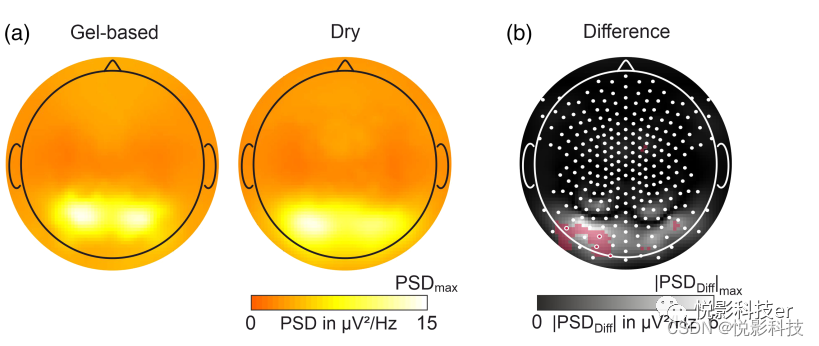
chart 9 Average under closed eyes alpha Large average of band power 2D Topographic map :(a) Interpolation diagram recorded by gel electrode and dry electrode ,(b) Absolute difference of statistically significant regions and channels highlighted in red .(b) The white dot in indicates the electrode position where there is no significant difference between the records of the two electrode types .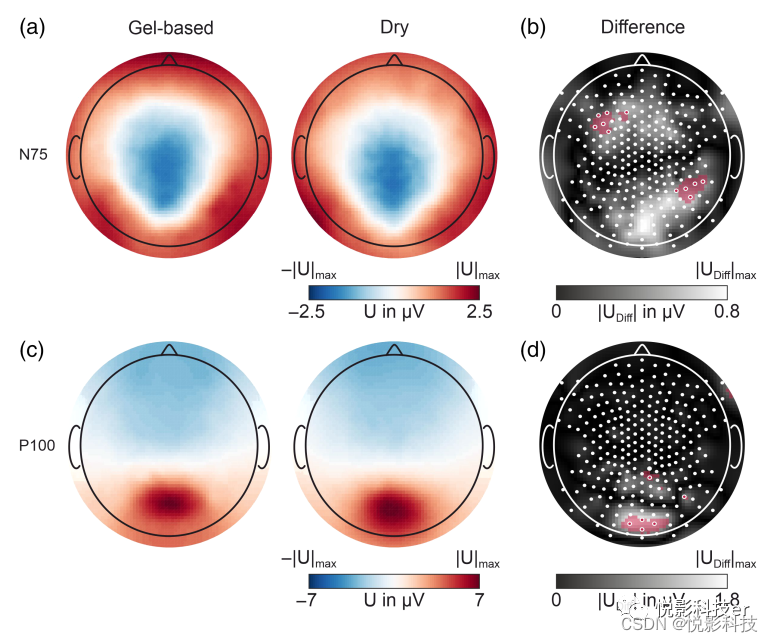
chart 10 Visual evoked potential (VEP) The large average of the main peak 2D Topographic map :(a) N75 Peak sum P100 Interpolation diagram recorded by peak gel electrode and dry electrode ;(b) Two N75 And (d) P100 Absolute difference of terrain .(b) and (d) in , Areas and channels with statistical differences are highlighted in red , The white dot indicates the channel with no statistical difference .
chart 11 Wear test under selected conditions SEM Surface image :(a) Unused electrodes ( Conditions 0),(b) Use on furry real skin 800 Next time ( Conditions 1), Use on artificial skin 3200 Next time ( Conditions 6).
3.3 Wear
Before the wear test , Proof of resistance measurement , When measuring the back of the electrode base plate , The resistivity of all pins of all test electrodes is lower than 1 Ω. Conditions 1 And conditions 2 Resistance measurement of ( See table 1) Displayed in the 800 and 1600 There is no change after this application , Therefore, there is no critical wear . stay 2800 After the first application ( Conditions 3), The outer ring of the long needle electrode 4 Pins show coating loss , And all other pins keep the resistance below 1 Ω. Conditions 4 stay 3200 The following results are obtained after application :1 One pin outer ring coating of electrodes is missing ; There are two pins on one electrode , The coating on the outer ring of the pin falls off ; Two electrodes showed no loss of coating , All pins show resistance values below 1 Ω. For conditions 5, A hemisphere on the outer edge of the wave needle electrode , stay 3200 After the first application , In diameter about 0.5 mm The point of shows obvious coating loss . otherwise , None of the wave feet show visible damage to the coating . After wear test , All resistances are still 1 Ω following .
When comparing three SEM photos , Within the normal variance range of electrodes in different coating batches . therefore , Two different wear tests are carried out in 800 No degradation of the surface coating is shown during secondary use , stay 3200 The surface of the conductive needle does not change during secondary use .
4. Discuss
We have developed a system with 256 A new dry electrode cap with electrodes is used for HD-EEG, And successfully in 30 The cap was verified in an in vivo study of healthy volunteers . We use a reference cascade amplifier setup , Compare the performance of the new cap with the gel cap available on the market . Our results are consistent with previous studies on low-density dry multichannel EEG , It proves the functionality and applicability of the fast high-definition EEG Technology .
The preparation time of the dry electrode cap is 19 minute , The preparation time of gel electrode cap is 62 minute , Correspondingly reduced 69%. Although this decrease is lower than our previous low-density dry EEG studies (Fiedler et al., 2015), But this decline is quite large , The dry electrode cap is emphasized for fast hd - Applicability of EEG . The difference between the two studies may be the result of operator experience . The current study used 4 Operators recorded 30 Data sets , Previous studies did not include multiple operators , So maybe from cap Benefit more from the improvement of proficiency in application .
Volunteers do not need to wash gel off their hair , The operator also does not need to remove the single electrode remaining in the gel . Besides , Compared with the concept of semi dry electrode , There is no need to prepare a single electrode before applying the cap . Semi dry electrodes may have advantages in low-density EEG , But in HDEEG When used in , The preparation of individual electrodes makes them as time-consuming as gel electrodes . It is worth noting that , The commercial gel reference cap used is in accordance with the manufacturer's recommendations , Designed for rapid gel cap preparation , No separate skin preparation is required ( That is, hair separation 、 Skin cleansing and skin abrasion ), Instead, just use electrolyte gel on each electrode . therefore , Compared with the traditional clinical cap , This gel cap can be applied faster , The above additional skin preparation steps are required . therefore , The improvement of preparation time by using dry electrodes reported in this study may even be higher than that of traditional clinical gel based systems , Not specifically designed for fast applications .
There is no statistically significant difference between the attention levels of the two hat types . The reported comfort value of dry electrode is consistent with our previous research . According to several volunteers , The wave electrode that adjusts the height of the needle and the position of the forehead helps to improve the comfort of these head areas . The average comfort scores of both gel electrode and dry electrode are 1-10( No pain ) The lower half of the range , Therefore, it can be concluded that : For the recording paradigm at hand , Comfort is enough . Although the comfort score of the dry electrode cap is lower than that of the gel cap , But the overall preference of most volunteers for dry electrode caps is amazing . This fact may be related to (a) Discomfort and time requirements related to the use of gel based caps for gel and cleaning processes , as well as (b) In the existing paradigm , Simulate the typical use of dry electrode , In particular, the short time is related to the overall wearing time measured intermittently . Polymer electrode substrate can adapt to the flexibility of electrode , And realize a softer electrode , Especially in the head with less hair , It helps to further increase the comfort of wearing .
When selecting the test sequence of gel type and dry electrode cap , You need to choose between a random sequence and a fixed sequence that always starts with a dry electrode cap . Random sequence generally avoids the systematic influence of test sequence on the results , But it will have a considerable cross impact . If the gel cap is used before drying the electrode , Gel will change the skin interface over time , Because of skin hydration and chloride deposition , Thus changing skin properties , Such as conductivity . Among the various factors that affect the contact characteristics of dry electrodes , Skin hydration seems to be an influential factor ( Own unpublished observations ). In order to avoid this cross influence , We chose a fixed order , Always test the dry electrode cap first . Because the test sequence is much lower than the effect of gel on the skin interface , Therefore, we evaluated the risk and impact of induced errors .
The limitations of current cap and electrode system will be further studied and solved in future research . The mechanical flexibility of the dry electrode cap is reduced , And the retraction of the electrode requires a more refined classification of the hat size of the fabric cap , Or develop alternative 、 Special cap system to solve these two problems . People with very thick hair ( namely , High hair density and / Or hair follicle diameter ) It may need to be in the length of the electrode needle 、 Appropriate electrode design in terms of density or direction . Besides , The current research is carried out under laboratory conditions , Volunteers are sitting . It is necessary to study the influence of moving workpiece in the future . Although the current research results do not show that the central region of the brain α Activity and potential distribution (VEPs) On the electrode - Topological differences in the case of higher skin interface impedance , However, future research should add a paradigm for detailed analysis of related activities in the central brain region , For example, somatosensory and motor activities .
5. Conclusion
The dry electrode allows more degrees of freedom in the design and manufacture of EEG caps , Without long preparation or cleaning requirements . New dry HD-EEG Hats help speed 、 No gel EEG , Significantly reduce each HD-EEG Measure the ecological and economic impact on consumables , Is the first to have 256 Dry type of channels HD-EEG System . Our multiparameter study is based on dry and gel EEG caps in time 、 The equivalence of multiple signal characteristics in frequency and space domain provides evidence . The advantages of dry EEG are helpful to expand new application fields in research and clinical fields , Increase its application .
reference :A high-density 256-channel cap for dry electroencephalography
边栏推荐
- H. 265 introduction to coding principles
- 从“化学家”到开发者,从甲骨文到 TDengine,我人生的两次重要抉择
- Cent7 Oracle database installation error
- Community group buying has triggered heated discussion. How does this model work?
- mysql80服务不启动
- What should we pay attention to when entering the community e-commerce business?
- Apache DolphinScheduler 入门(一篇就够了)
- ThreadLocal source code learning
- ArcGIS Pro creating features
- Tdengine already supports the industrial Intel edge insight package
猜你喜欢
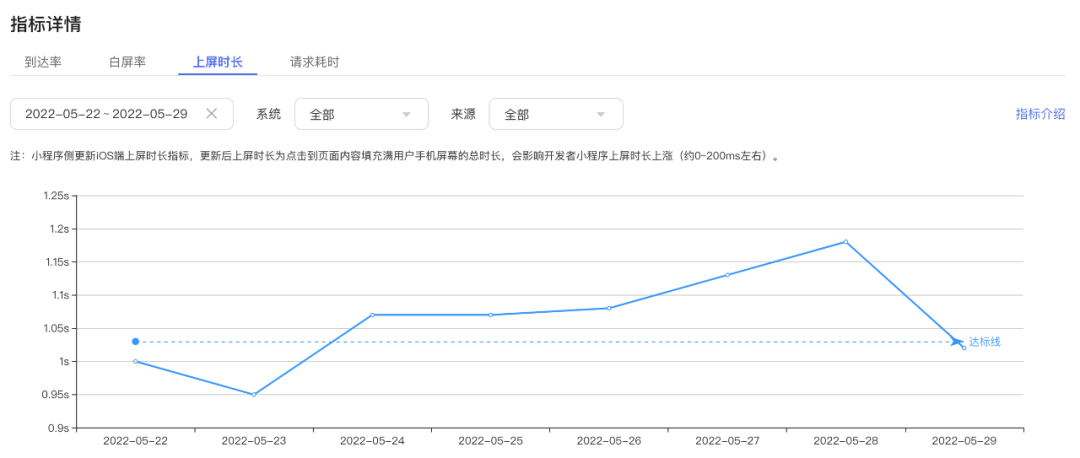
小程序启动性能优化实践

历史上的今天:第一本电子书问世;磁条卡的发明者出生;掌上电脑先驱诞生...

7 月 2 日邀你来TD Hero 线上发布会
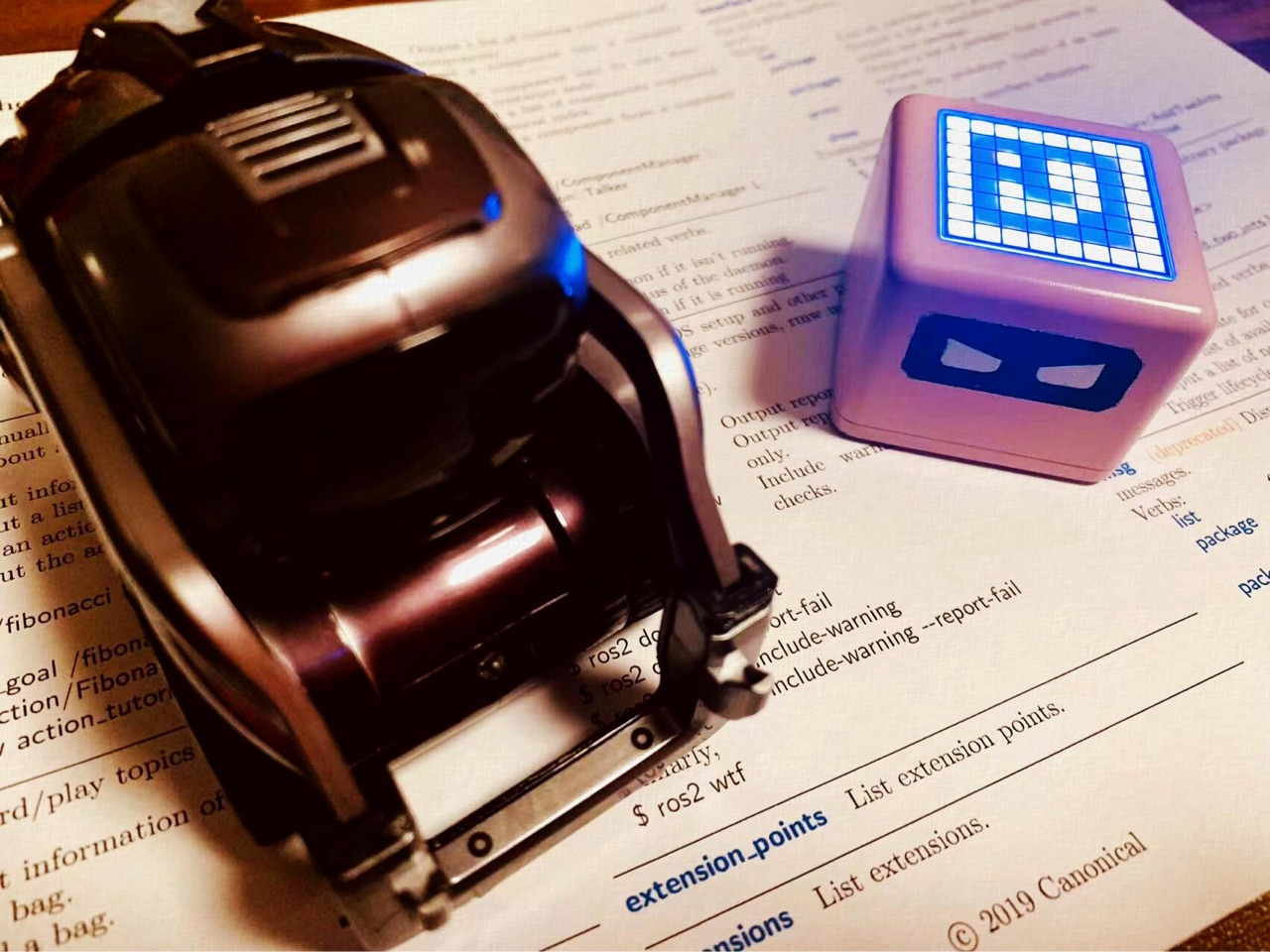
Single chip microcomputer principle and Interface Technology (esp8266/esp32) machine human draft
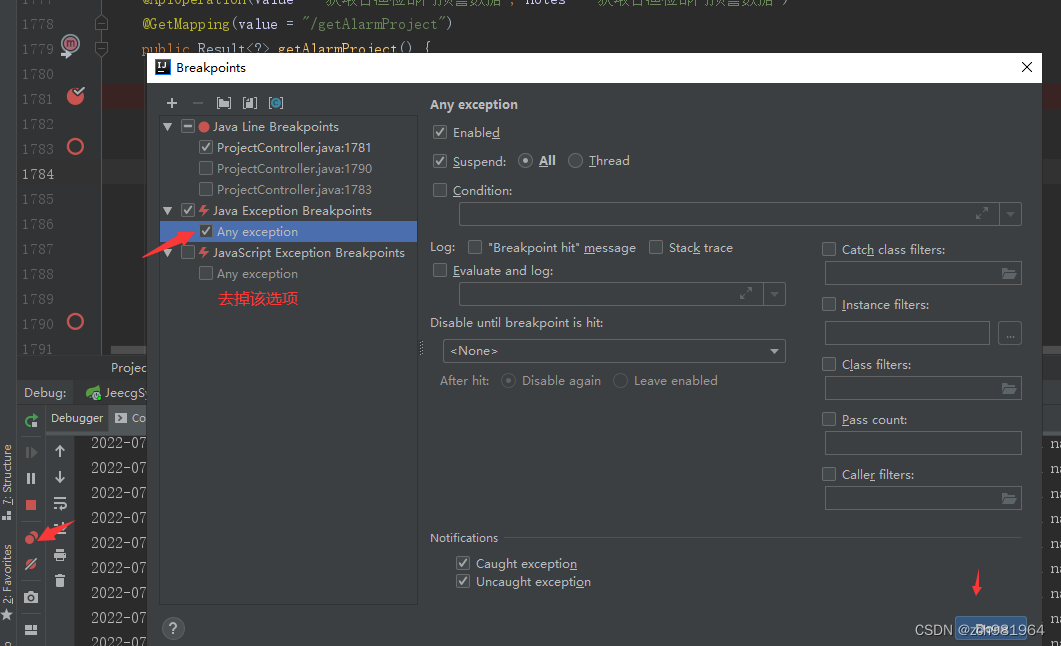
Idea debugs com intellij. rt.debugger. agent. Captureagent, which makes debugging impossible
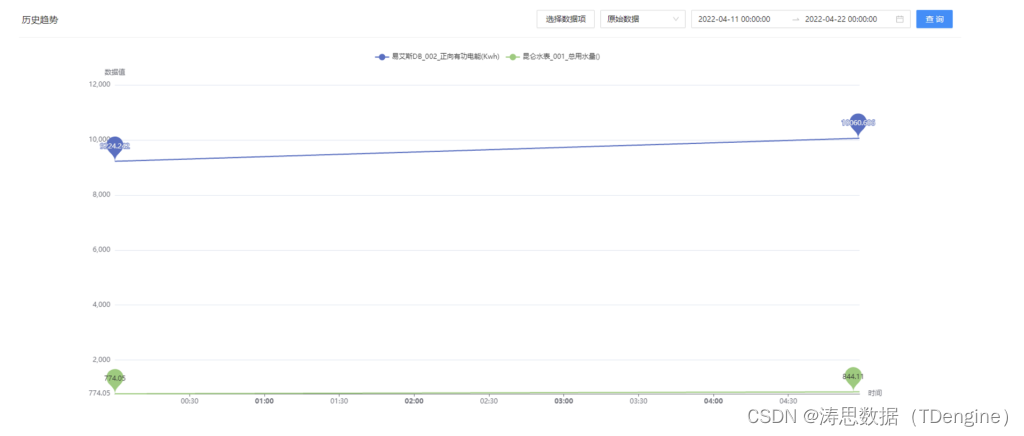
写入速度提升数十倍,TDengine 在拓斯达智能工厂解决方案上的应用

Kotlin compose and native nesting
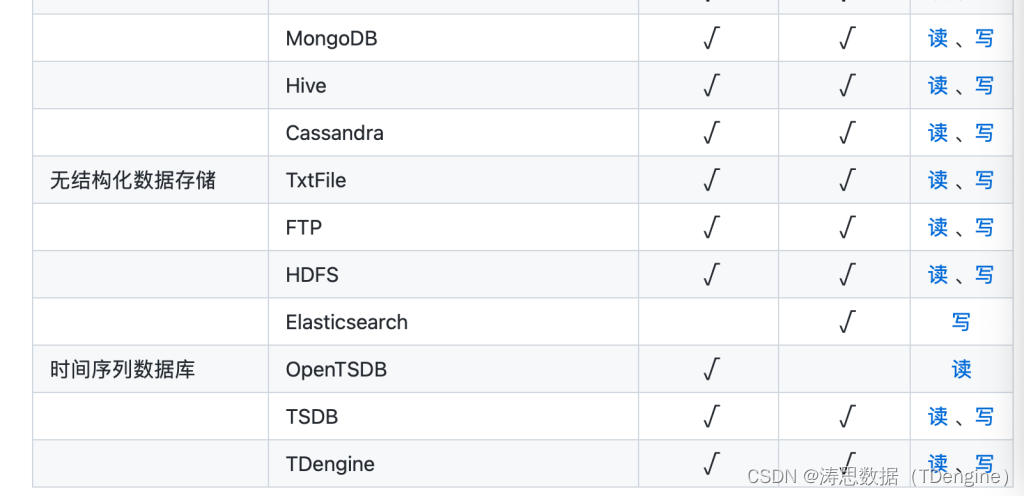
Tdengine can read and write through dataX, a data synchronization tool
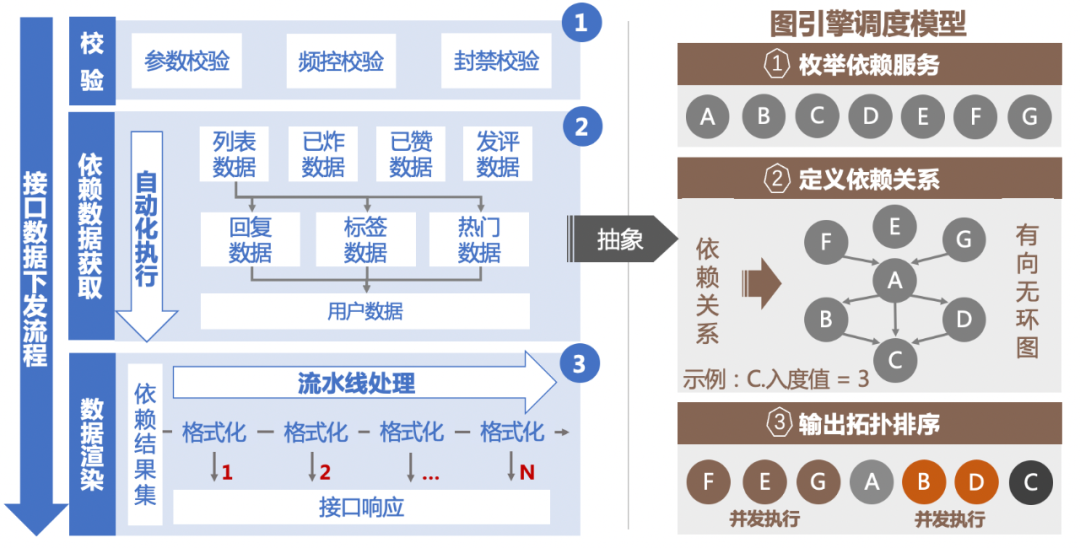
Design and exploration of Baidu comment Center

Cent7 Oracle database installation error
随机推荐
Flutter development: a way to solve the problem of blank space on the top of listview
Getting started with Apache dolphin scheduler (one article is enough)
【 conseils 】 obtenir les valeurs des axes X et y de la fonction cdfplot dans MATLAB
Node-RED系列(二九):使用slider与chart节点来实现双折线时间序列图
Tdengine connector goes online Google Data Studio app store
Are databases more popular as they get older?
分布式数据库下子查询和 Join 等复杂 SQL 如何实现?
RMS TO EAP通过MQTT简单实现
How to choose the right chain management software?
Coffeescript Chinese character to pinyin code
Kotlin compose and native nesting
【技术直播】如何用 VSCode 从 0 到 1 改写 TDengine 代码
单片机原理与接口技术(ESP8266/ESP32)机器人类草稿
Understand the window query function of tdengine in one article
Cent7 Oracle database installation error
TDengine 连接器上线 Google Data Studio 应用商店
如何獲取GC(垃圾回收器)的STW(暫停)時間?
移动端异构运算技术-GPU OpenCL编程(进阶篇)
Fluent development: setting method of left and right alignment of child controls in row
硬核,你见过机器人玩“密室逃脱”吗?(附代码)